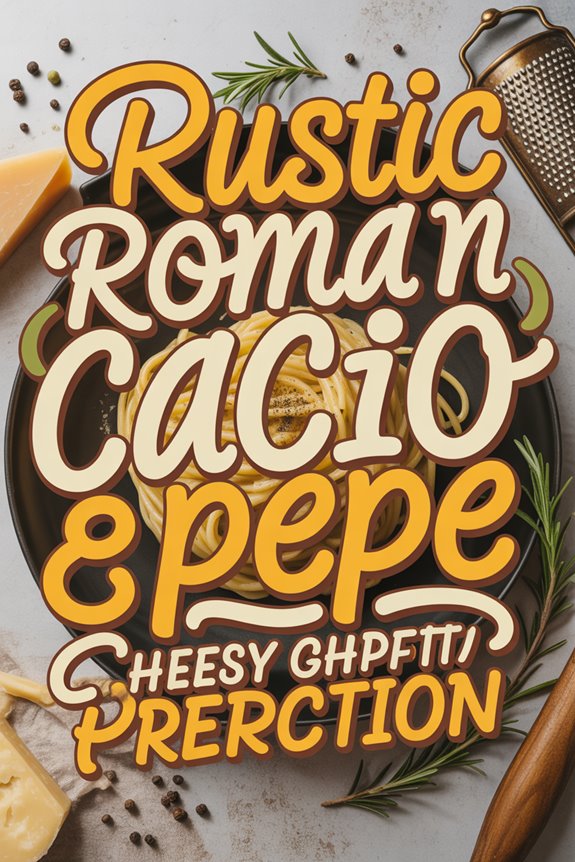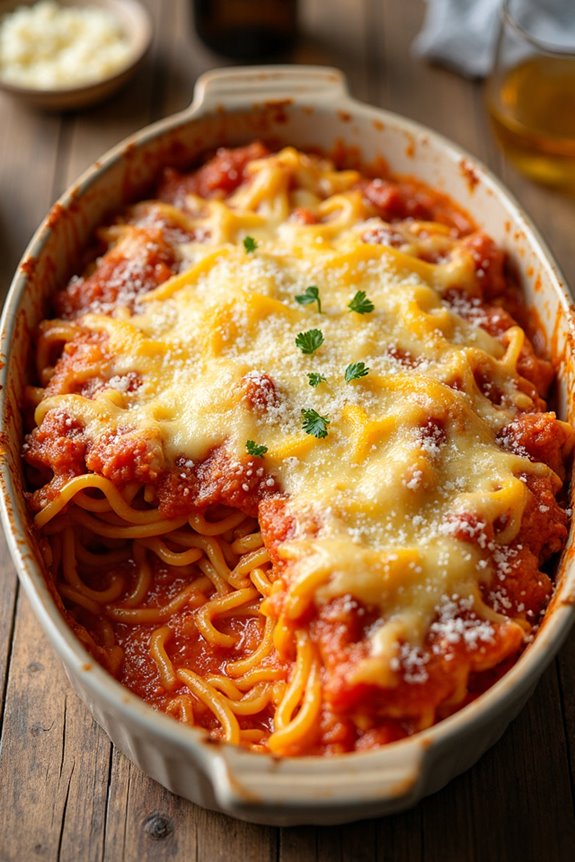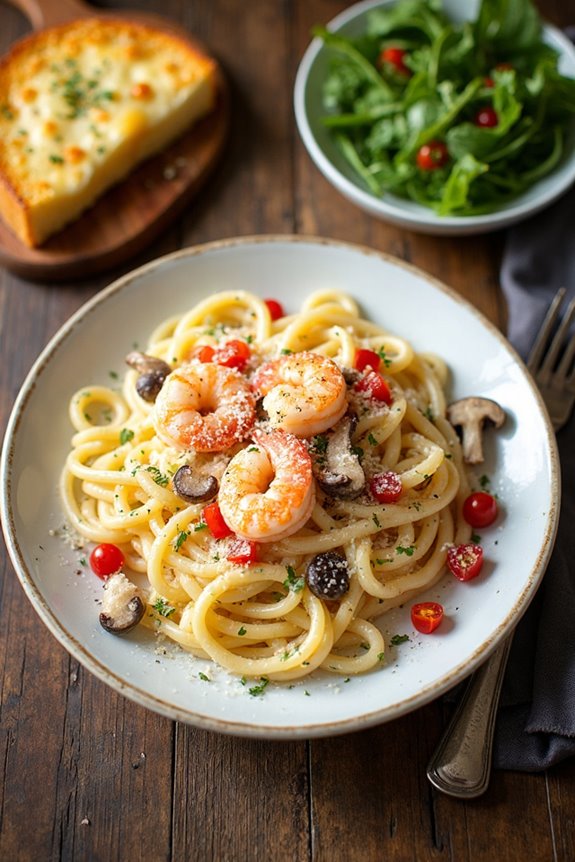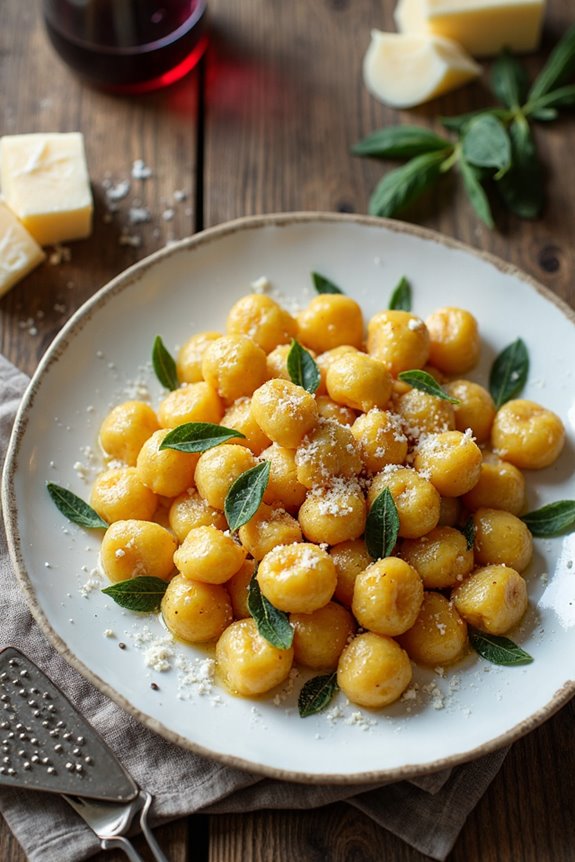Links below are affiliate links. We earn a commission on purchases at no extra cost to you.
Rustic Roman Cacio E Pepe Recipe: Cheesy Pasta Perfection
The timeless Rustic Roman Cacio e Pepe combines creamy cheese and bold pepper for a pasta experience that’s deceptively simple yet unforgettable.
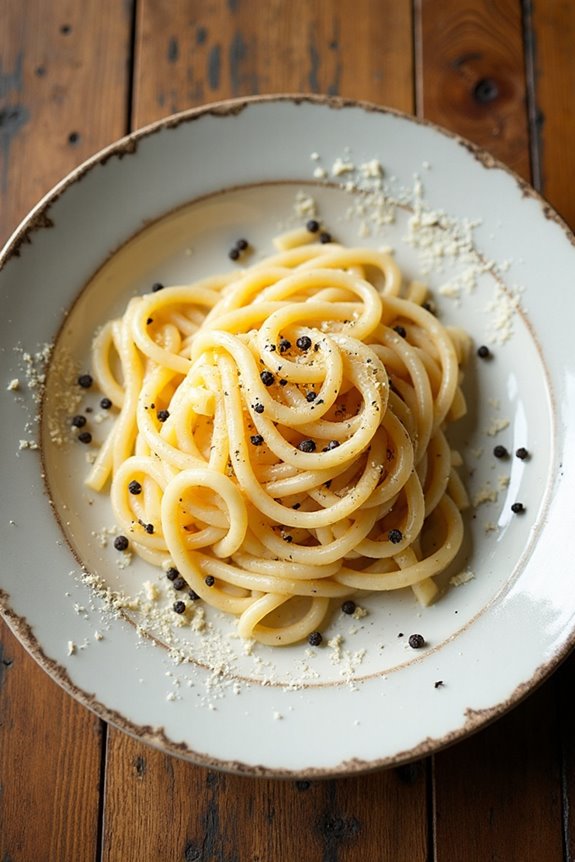
Why You’ll Love this Rustic Roman Cacio e Pepe
Even though it looks simple, this rustic Roman Cacio e Pepe packs a surprising punch of flavor that’s hard to beat. You might think, “Just cheese, pepper, and pasta?” But trust me, it’s the magic of those few ingredients coming together perfectly.
The creamy, cheesy sauce clings to every strand of spaghetti, while the pepper adds a bold kick that wakes up your taste buds. It’s comfort food without the fuss—great for busy nights or impressing friends without breaking a sweat.
Plus, it’s one of those dishes that feels fancy but is actually super easy to make. If you love simple, satisfying meals that don’t skimp on flavor, this is definitely one to keep in your cooking arsenal.
What Ingredients are in Rustic Roman Cacio e Pepe?
Alright, let’s break down the ingredients you need for this rustic Roman classic, Cacio e Pepe. It’s crazy how just a handful of simple ingredients can come together to create something so rich and satisfying. The key here is quality: good cheese, fresh pepper, and pasta that’s cooked just right. Nothing fancy, just straightforward and delicious. You’ll want to gather everything before you start because this dish moves fast once the pasta is done.
Here’s what you’ll need:
- 12 ounces spaghetti
- 4 tablespoons unsalted butter, softened to room temperature
- 1 tablespoon extra-virgin olive oil
- 2/3 cup grated Pecorino Romano cheese
- Salt, to taste
- Freshly ground black pepper, to taste (and don’t be shy—use plenty!)
Now, about those ingredients—don’t underestimate butter and olive oil here. They’re what help turn the cheese and pepper into that irresistible creamy sauce that clings to every pasta strand.
And Pecorino Romano? It’s sharper and saltier than your average Parmesan, so it really brings that authentic Roman vibe. Freshly ground black pepper is a must; pre-ground just won’t pack the same punch.
Oh, and don’t forget to salt your pasta water well—that’s where your base flavor starts. If you want, you can play with the pepper quantity, but remember, a good Cacio e Pepe bites back a little.
How to Make this Rustic Roman Cacio e Pepe
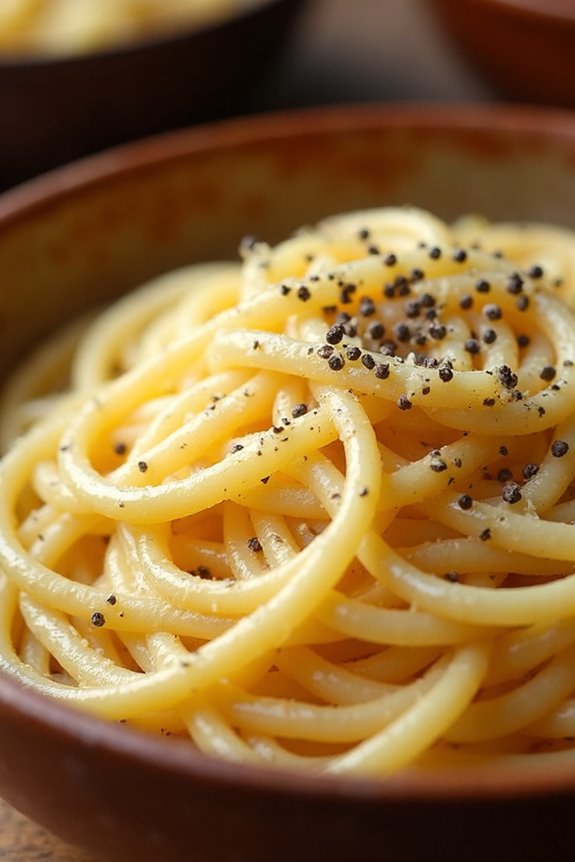
Alright, let’s explore making this classic Roman dish, Cacio e Pepe. First off, you’ll want to bring a large pot of salted water to a boil—don’t be shy with the salt here; it’s your pasta’s first chance to soak up some flavor.
Then, toss in 12 ounces of spaghetti and cook it until it’s al dente. That usually takes about 8 to 10 minutes, but keep an eye on it because nobody wants mushy pasta.
While your noodles are doing their thing, it’s time to get your sauce ready, and here’s where the magic truly happens.
Grab a large bowl and mash together 4 tablespoons of unsalted butter (make sure it’s at room temperature so it’s nice and soft), 1 tablespoon of extra-virgin olive oil, and 2/3 cup of grated Pecorino Romano cheese.
You’re basically making this rich, cheesy paste that’s going to hug every strand of spaghetti. The trick here? Don’t just dump everything in and hope for the best.
Mash them up thoughtfully until they form a creamy, spreadable paste—kind of like you’re buttering toast but way more sophisticated. This little step is key because it’s the foundation for your sauce.
Once the pasta is perfectly tender, drain it—but don’t toss all that pasta water! Reserve about half a cup.
Now, add the hot spaghetti right into your bowl with the butter-cheese paste. Toss it all together vigorously, and here’s the secret: add the reserved pasta water bit by bit.
This starchy water isn’t just filler; it’s what transforms your paste into a silky, luscious sauce that clings beautifully to every noodle.
Season generously with salt and, of course, lots of freshly ground black pepper—don’t be shy here, because the pepper is the star of the show and gives the dish its signature kick.
Serve it up immediately, and get ready for a simple dish that tastes way more complicated than it actually is.
For an even fresher and more authentic texture, consider making your own pasta using a kitchen pasta maker machine.
Rustic Roman Cacio e Pepe Substitutions and Variations
While sticking to the classic Cacio e Pepe is tempting, sometimes switching things up can make dinner feel a little less predictable—and a lot more fun.
For instance, swapping pecorino romano for Parmigiano-Reggiano gives a milder, nuttier vibe that’s surprisingly comforting.
Butter can be replaced with olive oil if you’re aiming for a lighter twist—though butter’s richness is hard to beat.
Feeling adventurous? Toss in a pinch of chili flakes or some garlic powder to wake up the flavor.
For pasta, spaghetti is traditional, but bucatini or even rigatoni hold the sauce beautifully and add texture.
These little tweaks keep the dish fresh without losing its soul. It’s like wearing your favorite jeans but trying a new color—still comfy, just a bit different.
What to Serve with Rustic Roman Cacio e Pepe
Even though Cacio e Pepe stands strong on its own, pairing it with the right sides can turn a simple meal into a full-on feast without stealing the spotlight.
Think crisp, fresh greens—something like arugula with a lemony vinaigrette cuts through the cheese’s richness perfectly.
Roasted veggies, especially asparagus or Brussels sprouts, bring a nice earthy crunch that balances the creamy pasta.
Need some crunch? Garlic bread or a crusty baguette works wonders, soaking up that luscious sauce.
And if you want to keep things light but satisfying, a simple tomato salad with a drizzle of olive oil adds a juicy, tangy contrast.
The key is to keep sides simple and fresh so the pasta remains the star, yet the meal feels complete and, dare I say, downright memorable.
Final Thoughts
Since mastering Cacio e Pepe might sound intimidating, it actually turns out to be one of the simplest but most satisfying pasta dishes you can whip up.
It’s just pasta, butter, pecorino, and a generous hit of black pepper—so minimal, yet packed with flavor.
The trick? Getting that sauce creamy and clinging perfectly to each strand without turning into a clumpy mess. Patience and the reserved pasta water are your best friends here.
Don’t rush the tossing; it’s like coaxing magic from a few humble ingredients. If you keep your expectations simple and your pepper plentiful, you won’t be disappointed.
This dish is proof that sometimes, less really is more—comfort food that’s elegant without trying too hard.
It’s rustic, cheesy perfection in every bite.

